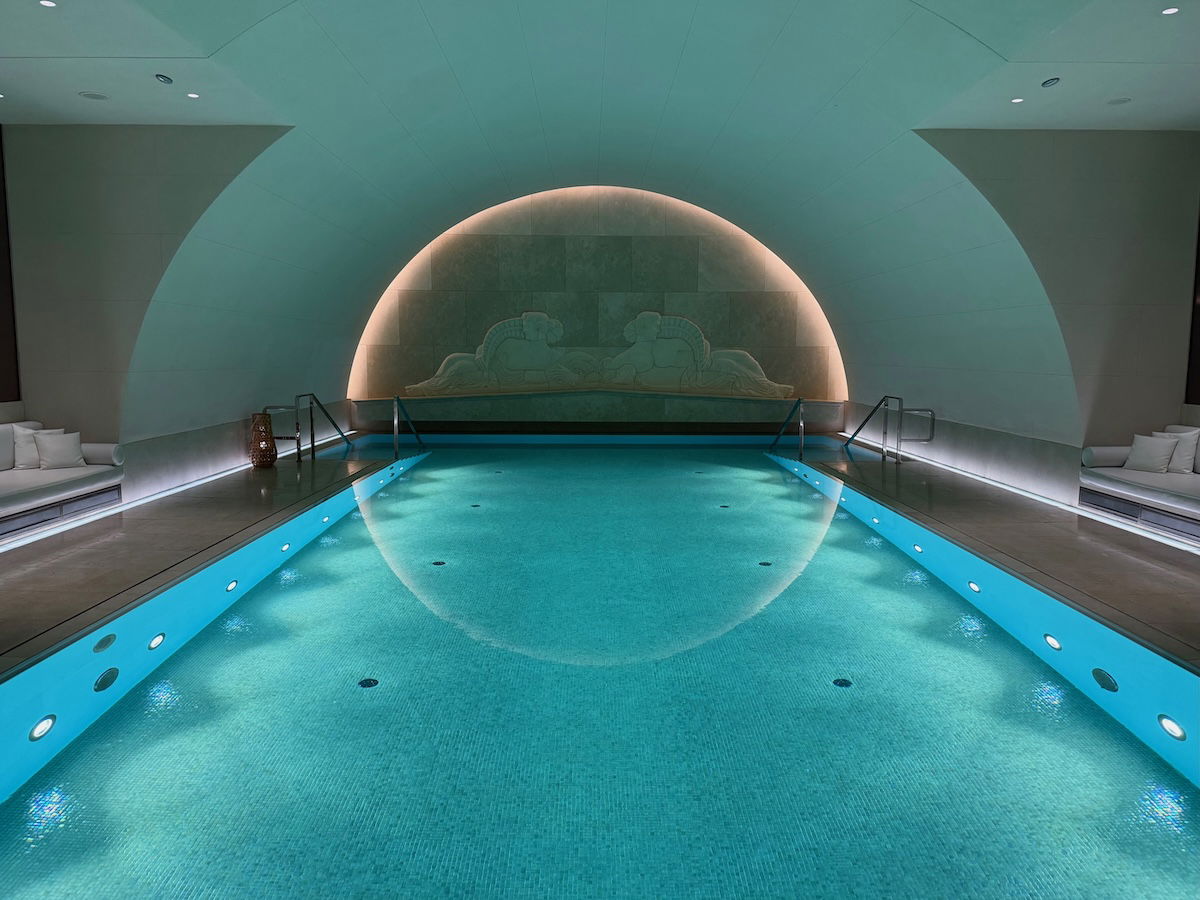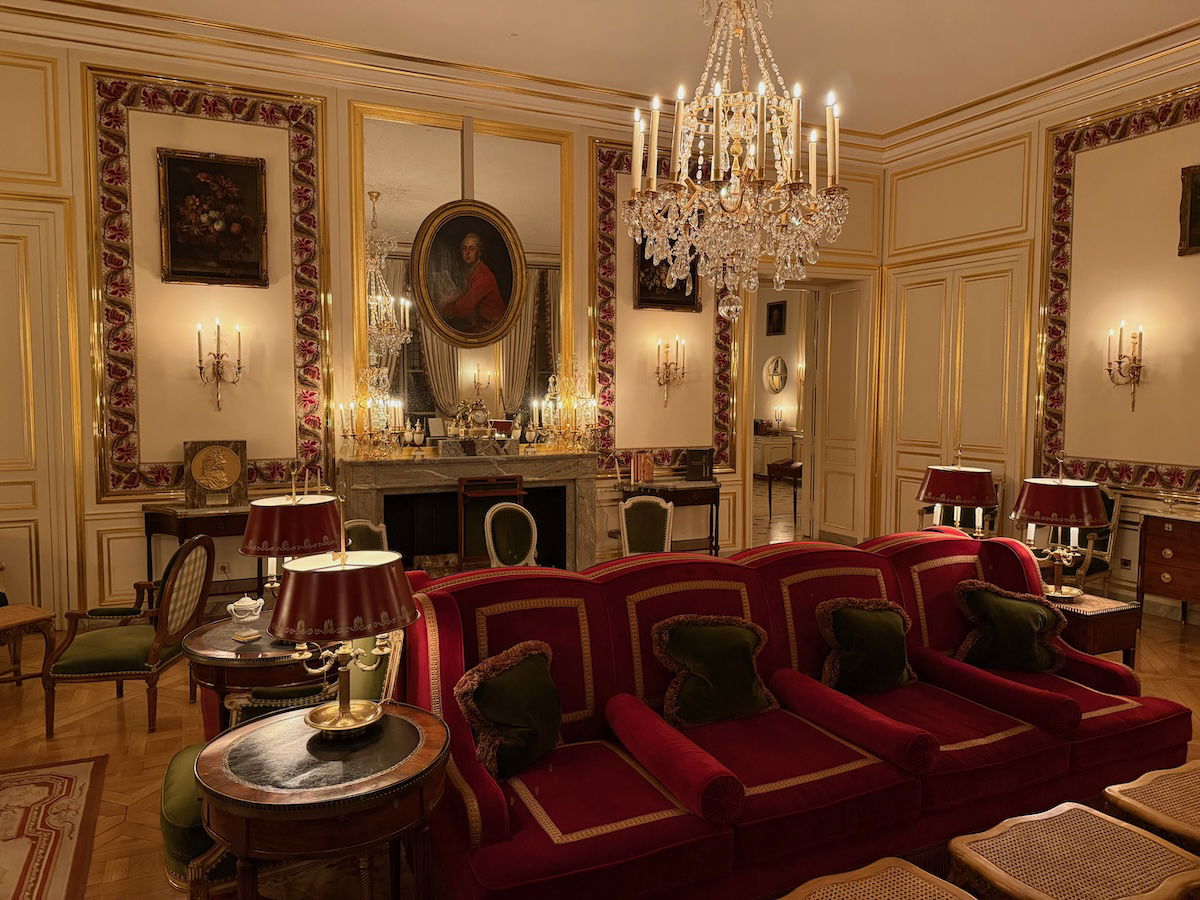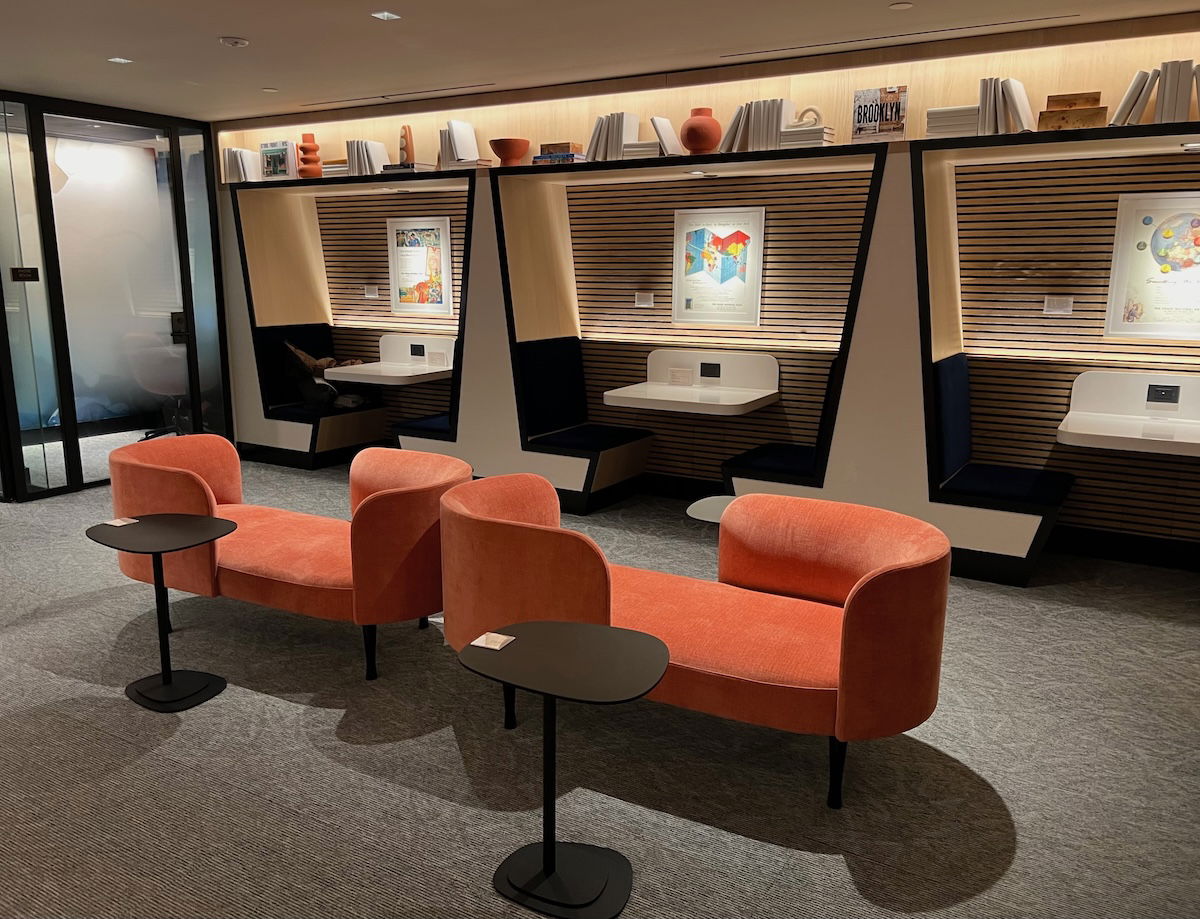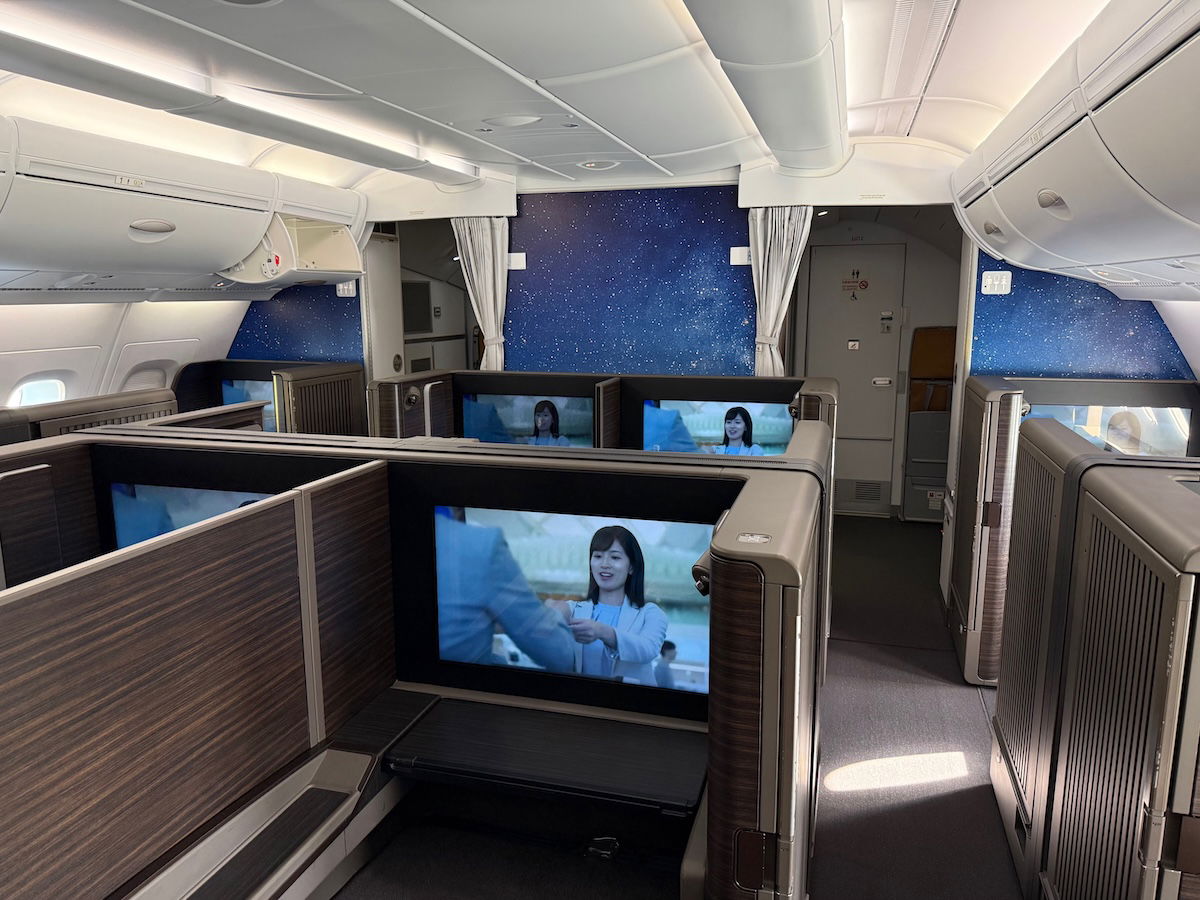Link: Learn more about the Sapphire Reserve for BusinessSM
We’ve recently seen the launch of the new Sapphire Reserve for BusinessSM (review), which is Chase’s new ultra-premium $795 annual fee business card that accrues Ultimate Rewards points.
With the card having just launched, I’m sure many people are trying to decide whether or not it makes sense to pick up this card. There’s no “one size fits all” answer, so in this post, I want to talk about how I’d go about deciding.
The way I view it, there’s not just one question here. It comes down to whether the card is worth getting in the first place, and also whether it’s worth keeping, based on the ongoing perks, including the return on spending, credits, and more. So here are my thoughts on the value proposition of the Sapphire Reserve Business, in no particular order…
In this post:
The Sapphire Reserve Business bonus is compelling
One of the big incentives to pick up any card is the welcome offer. Fortunately the Sapphire Reserve Business is offering a phenomenal welcome bonus, whereby you can earn 200,000 Ultimate Rewards points after spending $30,000 within the first six months.
While that’s a significant spending requirement, the welcome offer is huge. Based on my valuation of Ultimate Rewards points, I consider that offer to be worth a staggering $3,400, making it among the best credit card welcome offers.
If you’re eligible for a business card and can complete the spending requirement, this in and of itself should be a reason to pick up this card. You can’t beat such rich rewards as part of a welcome bonus. Keep in mind that eligibility for this card is unrelated to whether or not you have any other card, including the personal version of the card.

The Sapphire Reserve Business offers useful bonus categories
The Sapphire Reserve Business has some lucrative bonus categories, so this is a card that you might actually want to put spending on. The card offers:
- 8x points on all Chase Travel℠ bookings
- 5x points on Lyft rides, through September 30, 2027
- 4x points on direct airfare and hotel spending
- 3x points on select advertising
- 1x points on all other purchases
Obviously everyone has different spending patterns, so there’s not going to be any card that has a rewards structure that’s great for everyone. However, if you’re okay with booking travel through Chase Travel, if you spend a lot on airfare and hotels, and/or if you spend a lot on advertising, then this card could be a rewarding card. If those bonus categories aren’t useful for you, there are probably better cards for your spending.
When you’re considering the rewards structure, it’s also worth keeping in mind the perks that the card offers if you spend at least $120,000 per calendar year. If you spend that much on the card, you can receive the following additional benefits, which add considerable value:
- IHG One Rewards Diamond status, which is IHG’s top tier status, offering perks like complimentary breakfast, room upgrades, and more
- Southwest Rapid Rewards A-List status, offering perks ranging from priority seating to free checked bags
- A $500 Southwest credit, for flights booked via Chase Travel
- A $500 Shops at Chase credit, valid for purchases with select brands, including Baccarat, Bang & Olufsen, Breitling, Tumi, and more

The Sapphire Reserve Business credits can offset the annual fee
As is common with premium cards nowadays, the Sapphire Reserve Business has a steep annual fee, but then offers all kinds of credits and benefits that can help offset that. The card offers:
- Up to $500 in annual hotel credits
- Up to $400 in annual ZipRecruiter credits
- Up to $300 in annual travel credits
- Up to $300 in DoorDash credits
- Up to $200 in annual Google Workspace credits
- Up to $120 in annual Lyft credits
- Up to $100 in annual giftcards.com credits
There are terms and restrictions associated with each of these credits, and obviously most cardmembers won’t maximize all of these perks.
I typically view these credits as being intended to help offset the annual fee, so I try to calculate how much I value them. At a minimum, I consider the $300 annual travel credit to be worth close to face value, so if you ask me, this is really more like a $495 annual fee card, for mental accounting purposes.
What about the other credits? Based on my own situation, I think the $100 annual giftcards.com credit is the next most valuable credit, since this basically lets you buy a $50 gift card every six months. While it’s something you have to remember to do, that’s close to being good as cash.
Then the Lyft credit comes in the form of a $10 per month credit. While that’s a small monthly amount, I do use Lyft frequently, so to me, I guess that’s also worth close to face value.
Personally, I struggle with valuing the other credits. But if you could use ZipRecruiter or Google Workspace credits, it’s even easier to justify the annual fee. Meanwhile the $500 annual hotel credit sounds nice, but it requires booking with The Edit, with a minimum two night stay, and it’s broken up into a semi-annual perk, so it’s hard to put a specific value on that.

The Sapphire Reserve Business lounge access could be valuable
Nowadays, airport lounge access is one of the most valuable perks offered by premium credit cards. Admittedly there’s quite a bit of overlap here, given that premium cards from all of the big issuers offer lounge access, though the details differ.
In the case of the Sapphire Reserve Business, the card offers access to Chase Sapphire Lounges, as well as a Priority Pass™ Select membership. The Priority Pass™ Select membership is pretty standard, while unlimited access to Chase Sapphire Lounges globally is a perk that’s exclusive to Chase products. If you frequently travel through airports with Chase Sapphire Lounges, that’s a major incentive to have this card.

So, is the Sapphire Reserve Business worth it?
What’s my take on the value proposition of the Sapphire Reserve Business? I guess this should be analyzed independently, compared to the personal version of the card, and compared to another Chase business card. Here’s my take…
First of all, if you’re eligible, I think there’s no reason to not give the Sapphire Reserve Business a try. The card has a huge welcome offer, and you can always pick up the card and see how the rewards structure, credits, and perks, work out for you. There’s only upside there, if you ask me.
Now, when comparing the Sapphire Reserve Business to the $795 annual fee Chase Sapphire Reserve® Card (review), I do think there’s quite a bit of overlap between the two cards, so many people may ultimately decide on one card over the other. Which card is more lucrative? Here are the key differences, as I see it:
- The Sapphire Reserve offers 3x points on dining, while the Sapphire Reserve Business offers 3x points on select advertising
- The Sapphire Reserve charges $195 per authorized user (and they receive lounge access), while the Sapphire Reserve Business charges $0 per authorized user (but they don’t receive lounge access)
- The Sapphire Reserve offers up to $300 in annual dining credits, up to $300 in annual Stubhub & viagogo credits, and up to $250 in annual Apple TV+ & Apple Music benefits, while the Sapphire Reserve Business offers up to $400 in annual ZipRecruiter credits, up to $200 in annual Google Workspace credits, and up to $100 in annual giftcards.com credits
- The Sapphire Reserve offers Air Canada Lounge access, while the Sapphire Reserve Business doesn’t
- The Sapphire Reserve offers bonus rewards after spending $75,000 annually, while the Sapphire Reserve Business offers extra perks after spending $120,000 annually
I don’t think there’s a consistent answer as to which card is more compelling. Personally, I prefer the bonus categories and credits on the Chase Sapphire Reserve, but others may come to a different conclusion.
I also think it’s worth comparing the Sapphire Reserve Business to the Ink Business Preferred® Credit Card (review), which is another popular Chase business card. This card has just a $95 annual fee, while also having a great welcome bonus, excellent bonus categories, and valuable travel protection. If you’re simply looking for a low cost and rewarding Chase business card, that definitely does the trick.

Bottom line
The Sapphire Reserve Business is a brand new premium card that will no doubt interest many, given its huge welcome offer, lucrative rewards structure, credits that help offset the annual fee, and lounge access.
People will have different takes regarding the value proposition of this card vs. the personal version of the card, the Chase Sapphire Reserve. While there’s a lot of overlap between the cards, there are some distinct advantages to each, and I think the personal might be a bit more lucrative than the business card, on balance.
For those who are put off by the card’s annual fee, the Ink Business Preferred is a low cost business card alternative. It has a much more reasonable annual fee, while still having a lucrative rewards structure.
At a minimum, I think it’s worth giving the Sapphire Reserve Business a try, given the huge welcome offer, and to see how the perks work out for you.
What’s your take on the value proposition of the Sapphire Reserve Business?





I think that there may be a slight beneft for this card compared to the personal version but it does not justify the annual fee. Firstly, because of the benefits and how it is broken up and the limitations to use it. Secondly, because of the bonus categories due to those limitations I would think most spending would be in 1x and for 1x there are better cards out there than earn more.
I think for the first year if you can hit the $30K this is a no brainer. Superb signup bonus but frankly Chase really should have done what Amex did with their Business Gold card and offer bonuses in categories a business will use out of a bunch rather than online advertising and other unappealing categories. It's pretty puzzling that a card that bills itself as a travel card offers only 1x on dining.
...I think for the first year if you can hit the $30K this is a no brainer. Superb signup bonus but frankly Chase really should have done what Amex did with their Business Gold card and offer bonuses in categories a business will use out of a bunch rather than online advertising and other unappealing categories. It's pretty puzzling that a card that bills itself as a travel card offers only 1x on dining.
Frankly I'm dubious about whether I can get enough value from the coupon book aspects to make this a keeper beyond the first year but time will tell.
I don't know about Tom, but I earn 4X MR points on restaurants worldwide with the AMEX gold.
I just got the card last week. I am doing it for the sign up bonus and automatic 300 travel credit. I could give a crap about the other perks as I would never use. I figure at minimum I am getting 230,000 points minus the 495 fee after travel credit will get me 16 nights at HR Bangkok. Saving 34 to 3600.
I wish I could tell you, but unfortunately I am 5/24. Which sucks, because given my high income and stellar credit score, I'm an excellent customer.
I was approved at 5/24. Went pending then approved a day later.
The lack of 3X on dining is ultimately what makes me unlikely to retain the card past the first year. Obviously businesses dine out with employees and clients - it seems like a weird way to differentiate against the personal version and is a major value reducer (at least for me).
Agreed. If you look at all business cards from all issuers, other than co-branded business cards, only the Amex Business Gold has restaurants as a bonus category. And, it's only US restaurants. It's an industry-wide thing. Like @BC, I would be inclined to get the personal CSR for business. And, while everyone is different, the business version's unique credits are less than optimal for me.